Welcome to the next dissection of Dragon Age lore, esteemed leaders. This time, I’ll tackle a topic that falls somewhat to the wayside: dwarves, and related matters—the Titans, and lyrium.
At first glance, Dragon Age dwarves are rather typical. They’re short and tough, and they live underground. They make magic weapons, and many of their men have beards. They resist magic, and cannot become mages. As it often happens with the franchise, though, it’s not quite as simple when you zoom in a little closer. The core of the dwarves’ identity is made up of two things: their ability to mine lyrium and enchant… and the fact that they’re teetering on the brink of extinction.
Society, or What’s Left of It
By the time Dragon Age: Origins begins, the dwarven civilization consists of two cities—Orzammar, and Kal Sharok. We never see the latter, however. There are vague mentions of it in the first two games. In Dragon Age: Inquisition, there is an option to make contact with them, but it only happens through a war table operation. All we know is that they managed to survive after the dwarves in Orzammar chose to abandon all other cities and thaigs and retreat. Needless to say, they hold just a bit of a grudge over being left to fend off endless darkspawn.
We know that the dwarves had a massive empire before the First Blight. It spanned the entire Thedas… or rather, below it. They built cities, created enchanted wonders and traded with the Tevinter Imperium. The Darkspawn ended it all. They overran the Deep Roads and all the cities and thaigs. Thus, Thedosian dwarves are effectively a post-apocalyptic society. They lived through the end of the world.
Orzammar became the capital of the dwarven empire some time before the First Blight—the former seat of power being Kal-Sharok. Afterwards, it became the place the survivors of the dwarven people ran to. Orzammar now clings 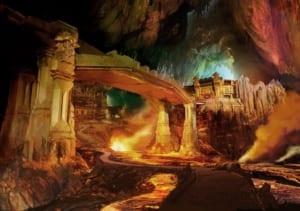 to life, holding the Darkspawn at bay, selling lyrium to the surface world and desperately striving to keep the old traditions alive.
to life, holding the Darkspawn at bay, selling lyrium to the surface world and desperately striving to keep the old traditions alive.
The obsession with tradition, rules and roles is something we encounter over and over in Orzammar. Dwarven society divides itself into castes: Noble, Warrior, Smith, Artisan, Miner, Merchant and Servant. Then there are casteless, who are right square on the bottom. Those dwarves who live on the surface likewise have no caste.
As you’d expect from a caste system, it’s very rigid and inflexible. A dwarf’s caste determines their social standing and role; deviating from them is discouraged, to put it mildly. Dwarves don’t have religion, as such. They venerate the concept of the Stone, which surrounds them and supports them. Dwarves come from the Stone, and return to it after death. Good dwarves strengthen it, and wicked ones weaken it.
The casteless aren’t technically the “lowest” caste, as they have no role, standing or place in society. The Stone rejects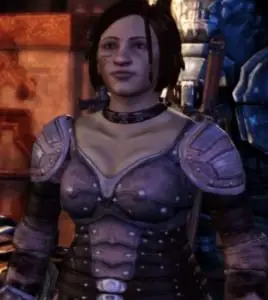 them, and they’re effectively criminals by dint of birth. It’s no surprise that their career options begin and end with organized crime or cheap, illegal labour. Which the upper castes are more than willing to use them for. Dwarves who leave for the surface become casteless by definition… but Orzammar couldn’t survive without them. They’re the ones who run the lyrium trade, both legal and illegal. There’s a whole diaspora of dwarves on the surface, but we see very little of it outside organized crime.
them, and they’re effectively criminals by dint of birth. It’s no surprise that their career options begin and end with organized crime or cheap, illegal labour. Which the upper castes are more than willing to use them for. Dwarves who leave for the surface become casteless by definition… but Orzammar couldn’t survive without them. They’re the ones who run the lyrium trade, both legal and illegal. There’s a whole diaspora of dwarves on the surface, but we see very little of it outside organized crime.
It’s not a pretty picture that I’ve painted here. The last remaining dwarven city that we actually see is a place rife with inequity, politics and blind devotion to tradition, all sending them into a downwards spiral. What was it like before the Darkspawn happened, however? Let’s dig into what we know.
Origins and Nature
For a long time, the origins of the dwarven species were a mystery. In Dragon Age: Inquisition, particularly the Descent and Trespasser DLC, we find out some pretty heavy facts, finally.
The conclusion of the Trespasser DLC tells us that the dwarves originate from a class of beings named Titans. They shaped the earth with their will, until they fell asleep. In Trespasser, we find out that they were struck down and put to sleep by the ancient elves, and their “gods”.
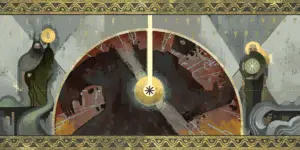
Dwarves evidently survived the fall of the Titans. It’s very unclear what they were like before the Titans fell. Elven mosaics call them “witless, soulless” workers of the Titans. It’s not exactly a reliable source, considering that the same mosaic proclaimed the elves’ intent to destroy the Titans, and it took Solas, the sole survivor of the ancient world, a while to consider that dwarves might actually be people. But it’s still telling. That being said, the same mosaic says that “their deaths will be a blessing”. If “they” refers to the dwarves, something clearly didn’t go as the elves thought it would.
Another hint for the dwarves’ former nature comes from Dagna, the Inquisition’s arcanist. When she analyzes pieces 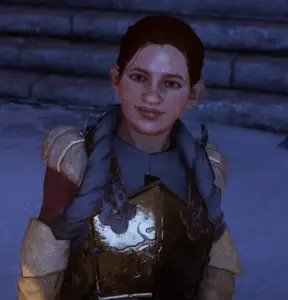 of the Fade that the Inquisitor brings back from the place, she experiences strange things. She felt huge, like a mountain, and “thought all the thoughts”. She was “around all her people”, and “her thoughts were all of theirs”. Tellingly, she speculates that it might be what the Stone feels like.
of the Fade that the Inquisitor brings back from the place, she experiences strange things. She felt huge, like a mountain, and “thought all the thoughts”. She was “around all her people”, and “her thoughts were all of theirs”. Tellingly, she speculates that it might be what the Stone feels like.
It’s hopelessly cryptic, but becomes clearer once we’ve finished Descent. I think dwarves were linked with the titans’ bodies as part of a hive mind, of sorts. This connection broke when the Titans fell. Which brings me to a theory a friend of mine and I formulated. Namely… perhaps the dwarves’ current caste system is a faint echo of their functions within a Titan’s body. It doesn’t seem like a coincidence—a race of beings who used to be part of a massive organism now have rigid social roles.
The question then becomes, what did happen to dwarves after the Titans fell? It seems like there are two major breakpoints in their history, one being the First Blight, and the other, the fall of the Titans. By the time the games take place, Titans are a children’s tale at best. Shaper Valta, who accompanies us throughout the questline, says she had found mentions of them in two places: a bedtime story, and a book that predates the First Blight. She believes the Shaperate, who chronicle dwarven history in lyrium runes, might have intentionally erased knowledge of the Titans.
If that is true… why? And when? The Shaperate is not above erasing memories when someone powerful enough demands it. If Bhelen became king in Dragon Age: Origins, he has the Shaperate remove his allies’ Carta affiliations. So what purpose could someone have had in hiding the Titans from the dwarves’ memories? Was it political? Or did they truly think it was for the best? Did it happen before or after the First Blight brought them to the brink of extinction?
I’m leaning towards it happening after the First Blight, and here is why. In Dragon Age 2, we visit the Primeval Thaig. There, we find red lyrium, which has such far-reaching consequences later on. But we also find evidence that the dwarves worshiped deities of some sort, something unthinkable to modern dwarves. We also encounter rock wraiths, also known as the Profane. According to dwarven lore, they’re dwarves so corrupt the Stone rejected them, but here’s what the Codex has to say:
We who are forgotten, remember,
We clawed at rock until our fingers bled,
We cried out for justice, but were unheard.
Our children wept in hunger,
And so we feasted upon the gods.
Here we wait, in aeons of silence.
We few, we profane.
Feasted upon the gods…there’s only one thing it could possibly mean. The tabletop Dragon Age RPG even explicitly states that rock wraiths feed on lyrium veins. And as we find out in Descent, lyrium is the Titans’ blood.
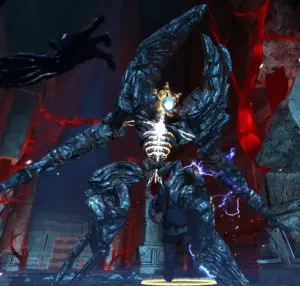
Therefore, I think it’s possible dwarves may have worshipped the Titans as gods at some point—maybe not all, but some. We see no mention of it in what little records we have that predate the First Blight, but it would disappear along with the mentions of Titans themselves. Did it happen because someone thought the Titans failed their people? Or was it a power-grab? My friend and I have theorized that the dwarven Shaperate are descendants of a forgotten priest-caste, but it’s just wild speculation on our part.
The Matter of Lyrium
That being said, “Stone sense” is a very real thing. Dwarves have an innate sense of direction and orientation underground. Some more than others, and the Shaperate recruits those who display it particularly strongly. The Miner caste is said to often have an uncanny way of finding lyrium veins.
Lyrium keeps coming up, again and again. Affinity to it is one of the dwarves’ innate traits, along with the stone-sense, resistance to magic, inability to perform magic, and inability to dream. Dwarves who live on the surface lose their stone-sense, and according to background materials, their resistance to magic as well…not that it stops Inquisitor Cadash from resisting magic. Their connection to lyrium remains, though. They can handle it safely, unlike the surface races.
It would be easy to link the dwarves’ disconnection from the Fade to lyrium, but mages use lyrium to enhance and empower the magic they draw from the Fade. Lyrium potions restore mana or increase magic power when used by the player-controlled characters. It can also serve as a power source for more complex and demanding spells.
 And yet, dwarves aren’t the only one who resist magic and the Fade. Templars and Tranquil come to mind. According to Dagna’s ramblings, Tranquil aren’t like dwarves… but also are, because they do work lyrium and resist its harmful effects. Could it be they approach the same problem from opposite sides? Well, Dagna puts it best herself: we have answers that aren’t answers.
And yet, dwarves aren’t the only one who resist magic and the Fade. Templars and Tranquil come to mind. According to Dagna’s ramblings, Tranquil aren’t like dwarves… but also are, because they do work lyrium and resist its harmful effects. Could it be they approach the same problem from opposite sides? Well, Dagna puts it best herself: we have answers that aren’t answers.
Templars, on the other hand, are likened to dwarves on multiple occasions. Cole, a spirit of compassion, says that dwarves are quiet, but with the old song still echoing inside, like Templars. The “old song” being the call of the Titans, most likely. Cole says that the Templars’ bodies become incomplete, and yearn for something bigger than they are. Thus, magic has no room to come in.
This yearning is the cause of the addiction that plagues the Templar Order. Ser, an enigmatic man who teaches the Inquisitor in the Templar skills, says:
“Inside, there’s something you don’t know you possess. Becoming a Templar will make you keenly aware. […] Once you are accustomed, that… something… will get hungry.”
This is more or less what Cole says. Lyrium awakens something in Templars, makes them yearn for something they don’t even know. The Titans. It’s not quite the same as what dwarves experience. The little folk can’t actively deny magic the way Templars can, while Templars can still dream, as far as we know.
This raises implications, though. A member of any species can become a Templar, even if most of them are humans. Does it mean all of them have some sort of bond with the Titans, on some level? Or does the lyrium forge such a bond?
Regardless of the answer to that, we know that lyrium grants Templars their abilities by allowing them to reinforce reality. They push the Fade away, preventing it from gaining a foothold; magic has no room to come in. According to Cullen, an ex-Templar struggling with lyrium dependency, those abilities become as instinctive as using a weapon, eventually.
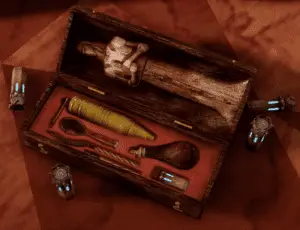
So in some way, lyrium is an antithesis to the Fade. Tranquility, the process in which a person is cut off from the Fade, is accomplished with a lyrium brand. And yet, like I said, lyrium also empowers magic. It creates enchanted items, and gives mages more power.
Lyrium is a very precious commodity, for obvious reasons. But I think it’s even more important than its economic value would suggest. It seems obvious that it links to some fundamental truths about the Dragon Age universe. And dwarves share that link. Let’s hope the Titans’ wayward children receive more development in the coming material.

